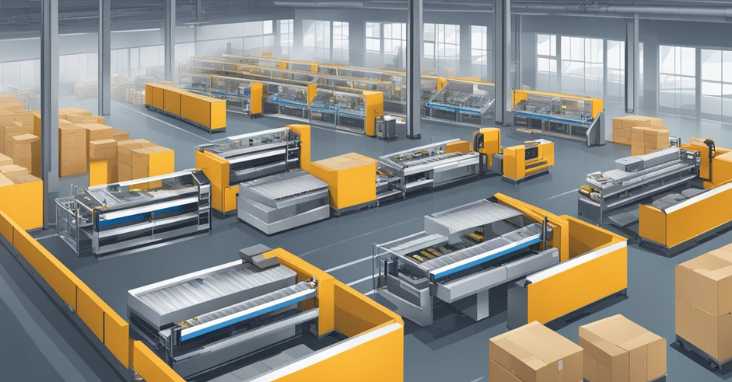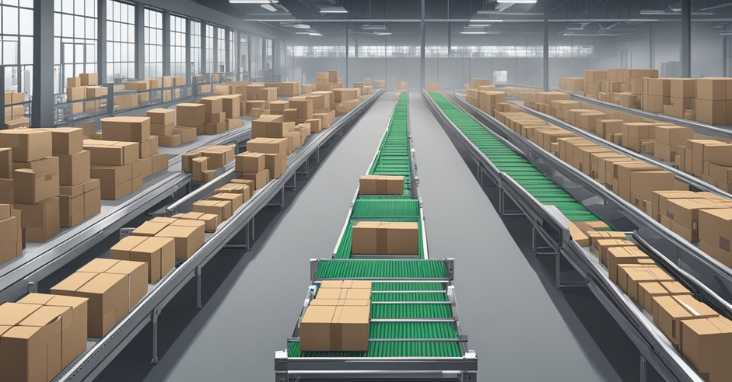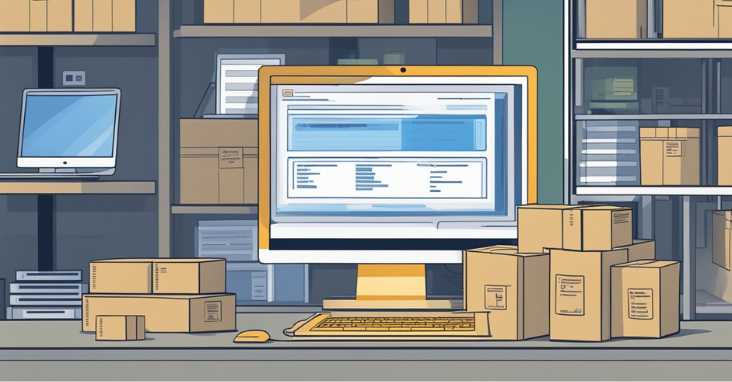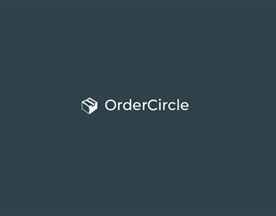What is manufacturing inventory software ? Manufacturing inventory software tracks & manages materials & products, optimizing production workflows and supply chain efficiency.
Manufacturing inventory software is a type of software designed to help manufacturers manage their inventory efficiently. It provides a centralized platform for managing inventory levels, tracking orders, and monitoring production processes. With the help of manufacturing inventory software, manufacturers can streamline their operations, reduce waste, and improve accuracy.

Understanding Manufacturing Inventory Software
Manufacturing inventory software is a critical tool for manufacturers looking to optimize their inventory management processes. It provides real-time visibility into inventory levels, allowing manufacturers to make informed decisions about when to order new materials and when to produce finished goods. Additionally, manufacturing inventory software can help manufacturers track orders, monitor production processes, and identify potential bottlenecks in their operations.
Key Features of Manufacturing Inventory Software
Manufacturing inventory software typically includes a range of features designed to help manufacturers manage their inventory efficiently. These features may include inventory tracking, order management, production monitoring, and reporting capabilities. Additionally, many manufacturing inventory software solutions offer integration with other software systems, such as accounting software and ERP systems, to provide a comprehensive view of the manufacturing process.
Key Takeaways
- Manufacturing inventory software provides a centralized platform for managing inventory levels, tracking orders, and monitoring production processes.
- Key features of manufacturing inventory software include inventory tracking, order management, production monitoring, and reporting capabilities.
- Manufacturers should consider factors such as software integration, deployment options, and cost when selecting the right manufacturing inventory software for their needs.
Here’s an example of an external resource that has high authority on the topic
Understanding Manufacturing Inventory Software
Manufacturing inventory software is a tool that helps companies track and manage their inventory levels. It is specifically designed for manufacturing businesses, which have unique inventory management needs. This section will cover the core functions of manufacturing inventory software, as well as the benefits of using it in manufacturing.
Core Functions
Manufacturing inventory software has several core functions that help businesses manage their inventory. These include:
Inventory tracking: Manufacturing inventory software allows companies to track their inventory levels in real-time. This helps businesses avoid stockouts and overstocking, which can both be costly.
Inventory management: The software also helps businesses manage their inventory levels. It can suggest reorder points, set safety stock levels, and generate purchase orders automatically.
Production planning: Manufacturing inventory software can help businesses plan their production schedules based on their inventory levels. This ensures that they have enough inventory to fulfill orders, without overproducing.
Quality control: The software can also help businesses ensure the quality of their inventory. It can track expiration dates, batch numbers, and other important information that can affect the quality of the product.
Benefits of Inventory Software in Manufacturing
There are several benefits of using manufacturing inventory software. These include:
Increased efficiency: By automating inventory management tasks, businesses can save time and reduce errors. This can lead to increased efficiency and productivity.
Cost savings: By avoiding stockouts and overstocking, businesses can save money on inventory holding costs and lost sales.
Improved accuracy: By tracking inventory levels in real-time, businesses can ensure that their inventory records are accurate. This can help prevent errors and reduce the risk of stockouts.
Better decision making: By having access to real-time inventory data, businesses can make better decisions about production planning, purchasing, and inventory management.
Overall, manufacturing inventory software is an essential tool for any manufacturing business. By using it, businesses can improve their inventory management processes, increase efficiency, and save money. For more information on manufacturing inventory software, check out this resource.
Key Features of Manufacturing Inventory Software
Manufacturing inventory software is a crucial tool for businesses that want to streamline their inventory management processes. It provides a comprehensive solution for tracking and managing inventory levels, materials, and orders. Here are some key features of manufacturing inventory software:
Inventory Tracking and Control
One of the most important features of manufacturing inventory software is inventory tracking and control. This software allows businesses to track inventory levels in real-time, which helps them avoid stockouts and overstocking. It also enables businesses to manage inventory across multiple locations, which is particularly useful for businesses with multiple warehouses or retail stores.
Barcode Scanning and RFID Integration
Manufacturing inventory software often includes barcode scanning and RFID integration capabilities. These features enable businesses to quickly and accurately track inventory levels and movements. Barcode scanning and RFID integration also help reduce errors that can occur with manual data entry.
Material Requirements Planning (MRP)
Manufacturing inventory software typically includes material requirements planning (MRP) functionality. This feature helps businesses plan and manage their material requirements for production. MRP takes into account factors such as lead times, order quantities, and inventory levels to ensure that businesses have the right materials on hand when they need them.
Lot and Serial Number Tracking
Manufacturing inventory software also includes lot and serial number tracking capabilities. This feature enables businesses to track the movement of inventory by lot or serial number. It is particularly useful for businesses that deal with perishable goods or products that have expiration dates.
Overall, manufacturing inventory software offers a comprehensive solution for businesses that want to streamline their inventory management processes. By providing features such as inventory tracking and control, barcode scanning and RFID integration, MRP, and lot and serial number tracking, this software can help businesses improve their efficiency, reduce errors, and increase profitability.
For more information on manufacturing inventory software, check out this article.
Software Integration and Compatibility
When choosing manufacturing inventory software, it is important to consider its compatibility with other software systems that are already in use. This can save time and resources in the long run, as it allows for seamless data transfer and reduces the need for manual data entry.
ERP and CRM Integration
Manufacturing inventory software should be able to integrate with existing ERP (Enterprise Resource Planning) and CRM (Customer Relationship Management) systems. This ensures that all data is kept up-to-date and accurate across all platforms. For example, Zoho Inventory offers integration with Zoho CRM, allowing for a streamlined process of tracking inventory and sales data.
E-commerce Platform Synchronization
For businesses that sell products online, it is important to choose manufacturing inventory software that can synchronize with their e-commerce platform. This allows for real-time updates on inventory levels and helps prevent overselling. QuickBooks Commerce offers integration with popular e-commerce platforms such as Shopify and WooCommerce.
Accounting Software Compatibility
Manufacturing inventory software should also be compatible with existing accounting software. This allows for accurate and efficient tracking of financial data. QuickBooks Inventory Management offers integration with QuickBooks accounting software, allowing for seamless data transfer between the two systems.
It is important to note that not all software systems may be compatible with each other. It is recommended to research and test compatibility before fully implementing a new manufacturing inventory software system.
Overall, choosing manufacturing inventory software that integrates with existing software systems can greatly improve efficiency and accuracy in data tracking. By considering compatibility with ERP, CRM, e-commerce platforms, and accounting software, businesses can ensure a streamlined process of inventory management.
Here is a list of the best inventory management software systems that offer integration with other software systems.
Inventory Management Technologies

Inventory management technologies have been evolving over the years, and with the advent of new technologies, it has become easier to manage inventory more efficiently. This section will discuss some of the latest technologies that are being used in inventory management.
Artificial Intelligence and Predictive Analytics
Artificial intelligence (AI) and predictive analytics are two technologies that are changing the way inventory management is done. With AI, it is possible to analyze large amounts of data quickly and accurately. This technology can be used to predict demand and forecast trends, which can help in making better inventory management decisions. Predictive analytics, on the other hand, is used to analyze historical data to identify patterns and make predictions about future events. This technology can be used to forecast demand, identify slow-moving items, and optimize inventory levels.
One example of AI and predictive analytics being used in inventory management is the use of demand forecasting models. These models use historical sales data, market trends, and other data points to predict future demand. This helps manufacturers to plan their production and inventory levels more accurately, reducing the risk of overstocking or stockouts.
Internet of Things (IoT) and Real-Time Data
The Internet of Things (IoT) is another technology that is changing the way inventory management is done. With IoT, it is possible to track inventory in real-time using sensors and other devices. This technology can be used to monitor inventory levels, track shipments, and identify potential issues before they become problems.
Real-time data can also be used to optimize inventory levels and reduce waste. For example, if a manufacturer has real-time data on how much inventory they have on hand, they can adjust their production levels accordingly. This can help to reduce waste and improve efficiency.
One example of IoT and real-time data being used in inventory management is the use of RFID (Radio Frequency Identification) technology. RFID tags can be attached to products, allowing them to be tracked throughout the supply chain. This technology can be used to monitor inventory levels, track shipments, and identify potential issues before they become problems.
In conclusion, AI, predictive analytics, IoT, and real-time data are all technologies that are changing the way inventory management is done. By using these technologies, manufacturers can improve efficiency, reduce waste, and make better inventory management decisions.
Deployment Options for Inventory Software

Inventory management software can be deployed in various ways, including cloud-based solutions and on-premise systems. Each option has its own advantages and disadvantages, and businesses need to weigh them carefully to determine which one is the best fit for their needs.
Cloud-Based Solutions
Cloud-based inventory software is hosted on remote servers, and users can access it through a web browser or a mobile app. This option offers several benefits, including:
- Accessibility: Users can access the software from any device with an internet connection, making it easy to manage inventory on the go.
- Scalability: Cloud-based solutions can easily accommodate businesses of all sizes, from small startups to large enterprises.
- Automatic updates: Cloud-based inventory software is updated automatically, so users don’t have to worry about installing new versions or patches.
However, there are also some potential drawbacks to consider, such as:
- Security: Cloud-based solutions require users to entrust their sensitive data to a third-party provider, which can be a concern for some businesses.
- Internet dependency: Cloud-based software requires a stable internet connection, so users may experience downtime or slow performance if their connection is disrupted.
On-Premise Systems
On-premise inventory software is installed locally on a business’s own servers or computers. This option offers some advantages, including:
- Control: Businesses have complete control over their inventory data and can customize the software to meet their specific needs.
- Security: On-premise systems are generally considered more secure than cloud-based solutions, since businesses have complete control over their data.
- No internet dependency: On-premise software doesn’t require an internet connection, so users can access their inventory data even if their connection is down.
However, there are also some potential drawbacks to consider, such as:
- Cost: On-premise systems require businesses to purchase and maintain their own hardware and software, which can be expensive.
- Limited accessibility: On-premise software is only accessible from the devices on which it is installed, which can be inconvenient for businesses with remote workers or multiple locations.
Overall, the choice between cloud-based and on-premise inventory software will depend on a business’s specific needs and preferences. For more information on inventory software deployment options, check out this helpful resource.
Cost Considerations and Pricing Models

Manufacturing inventory software can be a significant investment for businesses of all sizes. When evaluating different options, it’s essential to consider the cost and pricing models available.
Subscription vs One-Time Purchase
Manufacturing inventory software is available through two primary pricing models: subscription-based and one-time purchase. A subscription-based model typically involves paying a monthly or yearly fee to access the software, while a one-time purchase model involves paying a lump sum upfront to own the software outright.
Subscription-based models can be advantageous because they typically include ongoing updates and support, ensuring that the software remains up-to-date and functional over time. However, they can also be more expensive in the long run, particularly if the business uses the software for an extended period.
On the other hand, one-time purchase models can be more cost-effective over time, particularly for businesses that plan to use the software for an extended period. However, they may not include ongoing updates or support, meaning that the software may become outdated over time.
Total Cost of Ownership
When evaluating different manufacturing inventory software options, it’s essential to consider the total cost of ownership. This includes not only the initial purchase price but also ongoing costs such as updates, support, and training.
Businesses should consider the long-term costs of using the software, including any potential upgrades or additional features that may be necessary in the future. It’s also important to factor in any potential downtime or lost productivity that may occur during the implementation process.
Free Trials and Free Versions
Many manufacturing inventory software options offer free trials or free versions of the software. These can be an excellent way for businesses to evaluate whether the software meets their needs before committing to a purchase.
Free trials typically offer full access to the software for a limited period, such as 30 days. Free versions may offer limited functionality or be available only for a limited time.
Businesses should take advantage of these opportunities to evaluate the software and determine whether it meets their needs before making a purchase.
When evaluating different manufacturing inventory software options, businesses should consider the cost, pricing model, and total cost of ownership. They should also take advantage of free trials and free versions to ensure that the software meets their needs before committing to a purchase.
Here is a resource with a list of some of the best inventory management software options available on the market.
Improving Manufacturing Efficiency and Accuracy

Manufacturing inventory software can greatly improve the efficiency and accuracy of inventory control in a manufacturing setting. By automating and optimizing workflows, manufacturers can reduce errors and increase productivity. In this section, we will explore how manufacturing inventory software can improve efficiency and accuracy in manufacturing.
Automation and Workflow Optimization
Manufacturing inventory software can automate many of the manual processes involved in inventory control, such as data entry and tracking. By automating these processes, manufacturers can reduce errors and save time. Additionally, workflow optimization can help manufacturers streamline their processes and reduce waste. For example, automatic reorder points can ensure that inventory levels are always at optimal levels, reducing the risk of stockouts or overstocking.
Accuracy in Inventory Data
Accurate inventory data is crucial for efficient manufacturing. Manufacturing inventory software can help ensure that inventory data is accurate by providing real-time updates and alerts. This can help manufacturers avoid stockouts or overstocking, as well as reduce the risk of errors in production. By maintaining accurate inventory data, manufacturers can also improve their forecasting and planning processes.
Reporting and Analytics
Manufacturing inventory software can provide valuable reporting and analytics capabilities. This can help manufacturers gain insights into their inventory control processes and identify areas for improvement. For example, manufacturers can analyze inventory turnover rates to identify slow-moving items and adjust their ordering processes accordingly. Additionally, reporting and analytics can help manufacturers identify trends and make informed decisions about inventory management.
Manufacturing inventory software can greatly improve the efficiency and accuracy of inventory control in a manufacturing setting. By automating and optimizing workflows, manufacturers can reduce errors and increase productivity. Additionally, accurate inventory data and reporting capabilities can help manufacturers make informed decisions about inventory management. For more information on manufacturing inventory software, check out this guide to inventory control for manufacturers.
Selecting the Right Inventory Software

Selecting the right inventory software is a crucial decision for manufacturers. It can significantly impact the efficiency and profitability of their operations. Here are some key factors to consider when selecting inventory software.
Assessing Business Needs and Scalability
Before selecting inventory software, manufacturers should assess their business needs and scalability. They should consider factors such as the size of their business, the number of products they manufacture, and their growth plans. The software should be able to handle their current needs and be scalable to accommodate future growth.
Manufacturers should also consider the type of manufacturing they do. Some manufacturing processes require more complex inventory management than others. The software should be able to handle the specific needs of their manufacturing process.
Customization and User Experience
Customization and user experience are also important factors to consider when selecting inventory software. Manufacturers should look for software that is customizable to their specific needs. The software should allow them to customize fields, reports, and workflows to fit their business processes.
The user experience is also important. The software should be easy to use and intuitive. It should be able to provide real-time data and be accessible from anywhere, including mobile devices.
Support and Training Resources
Manufacturers should also consider the support and training resources provided by the inventory software vendor. The vendor should provide comprehensive training to ensure that the manufacturer’s team is proficient in using the software. The vendor should also provide ongoing support to help resolve any issues that arise.
Manufacturers should look for a vendor with a strong support team and a robust knowledge base. They should also look for a vendor that provides regular software updates and improvements.
Overall, selecting the right inventory software is a critical decision for manufacturers. By considering their business needs, customization and user experience, and support and training resources, manufacturers can find software that will help them manage their inventory efficiently and effectively.
For more information on selecting the right inventory software, check out this helpful guide.
Inventory Software for Specific Manufacturing Types

Manufacturing inventory management software is designed to help businesses keep track of their inventory levels, orders, and production processes. However, different types of manufacturing require different types of inventory software to optimize their operations. In this section, we will explore the different types of manufacturing and the inventory software that best suits their needs.
Discrete vs Process Manufacturing
Discrete manufacturing involves the production of distinct, identifiable items such as cars, computers, or toys. On the other hand, process manufacturing involves the production of goods that are indistinguishable from one another, such as chemicals, food, or pharmaceuticals.
For discrete manufacturing, inventory software such as Fishbowl and DelmiaWorks are popular choices. These software solutions offer features such as bill of materials management, work order creation, and inventory tracking. On the other hand, process manufacturing requires software that can handle batch processing, recipe management, and quality control. MES (Manufacturing Execution System) and Netsuite are two examples of software that are well-suited for process manufacturing.
Job Shop and Make-to-Order Environments
Job shop and make-to-order manufacturing environments require inventory software that can handle custom orders, variable production schedules, and complex bills of materials. Fishbowl and DelmiaWorks are two software solutions that can handle these requirements. They offer features such as custom order tracking, work order scheduling, and production planning.
In addition to these features, job shop and make-to-order manufacturing environments also require software that can handle inventory management for raw materials, work-in-progress, and finished goods. Fishbowl and DelmiaWorks offer inventory tracking and management features that allow businesses to optimize their inventory levels and reduce waste.
Overall, choosing the right inventory software for your manufacturing business depends on your specific needs and requirements. By understanding the different types of manufacturing and the software solutions that best suit them, businesses can optimize their operations and improve their bottom line.
Here is a comparison of different inventory management software options for manufacturing businesses.
Challenges and Considerations

Manufacturing inventory software can be a powerful tool to streamline and optimize supply chain management. However, there are also challenges and considerations that must be taken into account when implementing such software.
Data Security and Access Control
One of the primary concerns when it comes to manufacturing inventory software is data security. With sensitive information such as inventory levels, supply chain data, and customer information being stored in the software, it is crucial to ensure that the software has robust security measures in place to prevent unauthorized access.
Manufacturing inventory software should have access controls that limit who can view, modify, and delete data. It should also have strong encryption protocols to protect data both in transit and at rest. Additionally, regular backups and disaster recovery plans should be in place to ensure that data can be restored in the event of a breach or system failure.
Compliance and Industry Regulations
Another consideration when implementing manufacturing inventory software is compliance with industry regulations. Depending on the industry and location, there may be specific regulations that must be followed when it comes to inventory tracking, supply chain management, and data privacy.
Manufacturing inventory software should be designed with these regulations in mind, and should be able to generate reports and documentation that can be used to demonstrate compliance. Additionally, the software should be regularly updated to ensure that it remains compliant with changing regulations.
Overall, while manufacturing inventory software can be a powerful tool for optimizing supply chain management, it is important to carefully consider the challenges and considerations involved in implementing such software. By ensuring that data security and access control measures are in place, and that the software is compliant with industry regulations, businesses can reap the benefits of efficient inventory tracking and replenishment without putting sensitive data at risk.
Here is an external resource with more information on data security.
Future Trends in Manufacturing Inventory Software

Emerging Technologies and Innovations
Manufacturing inventory software is constantly evolving, and emerging technologies and innovations are driving the future of this industry. One of the most significant trends is the adoption of cloud-based inventory management systems, which offer real-time access to inventory data from anywhere in the world. This technology allows manufacturers to streamline their operations and reduce costs by eliminating the need for on-premise servers and software.
Another emerging trend is the integration of artificial intelligence (AI) and machine learning (ML) into inventory management systems. With AI and ML, manufacturers can automate many routine tasks, such as forecasting demand and optimizing inventory levels. This technology can also help manufacturers identify patterns and trends in their inventory data that would be difficult or impossible to spot manually.
Adapting to Market Changes
Manufacturing inventory software must also adapt to changes in the market. One of the most significant changes in recent years has been the rise of e-commerce, which has disrupted traditional supply chains and created new challenges for manufacturers. To address these challenges, manufacturers are turning to inventory management systems that can handle complex fulfillment processes and manage inventory across multiple sales channels.
Another trend is the increasing importance of sustainability and environmental responsibility in manufacturing. As consumers become more environmentally conscious, manufacturers must find ways to reduce waste and minimize their carbon footprint. Inventory management systems can help by optimizing inventory levels and reducing the amount of excess inventory that must be disposed of.
As the manufacturing industry continues to evolve, it is clear that inventory management software will play a critical role in helping manufacturers stay competitive. By embracing emerging technologies and adapting to market changes, manufacturers can optimize their operations, reduce costs, and improve their bottom line.
Here is an article from Forbes discussing five emerging trends in inventory management.
Frequently Asked Questions

How can small businesses effectively manage their inventory?
Small businesses can effectively manage their inventory by using specialized inventory software that automates the inventory tracking process. This software can help small businesses keep track of their inventory levels, reduce the risk of stockouts, and avoid overstocking. Additionally, small businesses can use inventory software to track sales and customer demand, which can help them make informed decisions about what products to stock and when to reorder.
What are the advantages of using specialized software for inventory and sales tracking?
Using specialized inventory software for inventory and sales tracking provides several advantages for manufacturing businesses. Firstly, it helps businesses automate their inventory management processes, which can save time and reduce errors. Secondly, it allows businesses to track inventory levels in real-time, which can help them make informed decisions about when to reorder. Thirdly, it helps businesses keep track of their sales and customer demand, which can help them make informed decisions about what products to stock.
Are there any free inventory management solutions suitable for manufacturing businesses?
Yes, there are free inventory management solutions that are suitable for manufacturing businesses. One such solution is Odoo, an open-source ERP system that includes inventory management functionality. Odoo allows businesses to manage their inventory levels, track sales, and generate reports. Additionally, it includes features such as barcode scanning, stock transfers, and inventory adjustments.
What features should be considered when selecting inventory software for a manufacturing company?
When selecting inventory software for a manufacturing company, several features should be considered. Firstly, the software should be able to track inventory levels in real-time. Secondly, it should be able to track sales and customer demand. Thirdly, it should be able to generate reports and analytics. Fourthly, it should be able to integrate with other business systems such as accounting and CRM software. Finally, it should be easy to use and have a user-friendly interface.
How does inventory management software integrate with manufacturing processes?
Inventory management software integrates with manufacturing processes by providing real-time visibility into inventory levels, production schedules, and sales data. This allows businesses to make informed decisions about when to reorder raw materials, schedule production runs, and manage their inventory levels. Additionally, inventory management software can be integrated with other business systems such as accounting and CRM software, which can help businesses automate their workflows and reduce errors.
What are the best practices for implementing an inventory method in a manufacturing setting?
The best practices for implementing an inventory method in a manufacturing setting include conducting a thorough inventory audit, setting up an inventory management system, training staff on how to use the system, and regularly reviewing and updating inventory levels. Additionally, businesses should establish clear inventory policies and procedures, including guidelines for ordering, receiving, and storing inventory. By following these best practices, businesses can improve their inventory accuracy, reduce stockouts, and increase efficiency.
For more information on inventory management software for manufacturing businesses, check out this guide.















